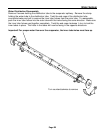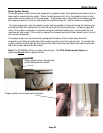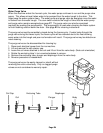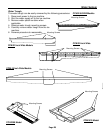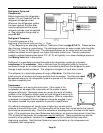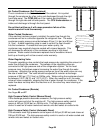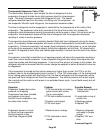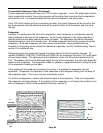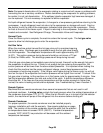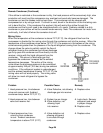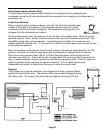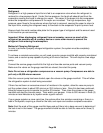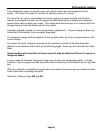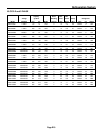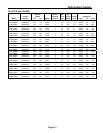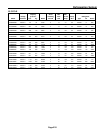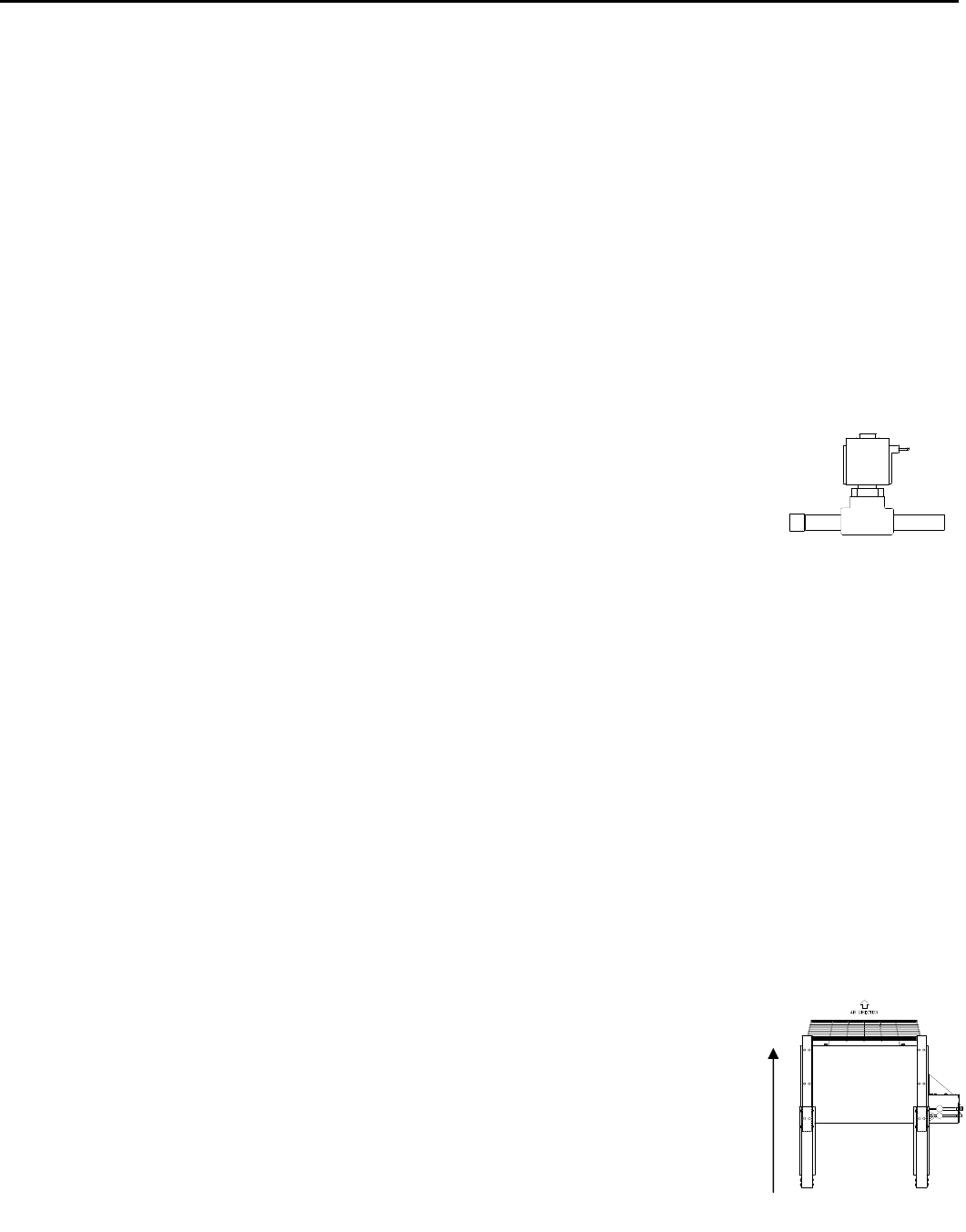
Refrigeration System
Page E5
Note: Permanent discoloration of the evaporator plating is normal and will cause no problems with
harvesting the ice or sanitary conditions. Before condemning the evaporator for plating problems,
be certain it is not just discoloration. If the spillway (plastic evaporator top) becomes damaged, it
can be replaced. It is not necessary to replace the entire evaporator.
As liquid refrigerant leaves the evaporator, it changes to a low-pressure gas before returning to the
compressor. Liquid refrigerant must not return to the compressor or damage will result. Frost on
the suction line at the inlet of the compressor indicates liquid returning to the compressor. Check
for frost at the end of the freeze cycle. If liquid is returning to the compressor, the problem must be
located and corrected. See Refrigerant Charge, Thermostatic Valve and Evaporator.
Harvest Cycle
Once the freeze cycle is complete, the machine enters the harvest cycle. The hot gas valve
opens to allow hot discharge gas to enter the evaporator.
Hot Gas Valve
When the machine enters harvest the hot gas valve coil is energized opening
the hot gas valve. Discharge gas is pumped through the hot gas valve directly
into the evaporator. The evaporator temperature will reach approximately 40°F
(4.5°C). The suction pressure during harvest should be a minimum of 70 psi
(4.8 bar) for R404a units. The discharge pressure will drop during harvest.
If the hot gas valve does not completely open during harvest, there will not be enough hot gas in
the evaporator to defrost the ice. If there is not enough hot gas entering the evaporator, the
suction pressure will be lower than the above stated pressures. It is important when making this
check that the machine has the proper refrigerant charge, normal head pressure and the
compressor is functioning properly. If the hot gas valve leaks during the freeze cycle, ice will not
form on the top of the evaporator and suction pressure will be higher than normal. To check if the
hot gas valve is leaking, let the machine run in the freeze cycle for approximately 5 minutes. Now
feel the temperature between the inlet and outlet of the valve. A definite temperature difference
should be felt. If the lines are the same temperature and the suction pressure is higher than
normal; the valve is leaking and should be replaced. Use Troubleshooting Trees in section C.
Remote System
Machines that use remote condensers have several components that are not used in self
contained machines. A mixing valve controls the head pressure when the ambient temperature at
the condenser drops below 70°F (21°C). When the bin fills with ice or is turned off at the selector
switch, the machine will pump all the refrigerant into the receiver before shutting off.
Remote Condenser
For proper operation, the remote condenser must be installed properly.
Improper installation will void the warranty. See remote guidelines on page
A13. The location of the remote condenser should be such that the ambient
air temperature does not exceed 120°F (48.9°C). If ambient temperature
exceeds 120°F (48.9°C) ice production will decrease until the ambient
temperature decreases.
Air
Flow



